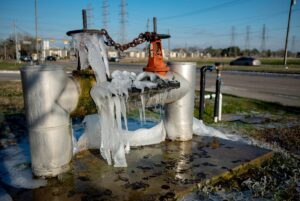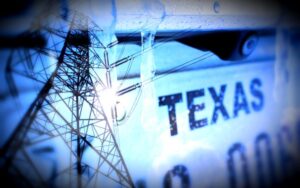
By JOHN KANELIS / johnkanelis_92@hotmail.com
Texans from Amarillo to McAllen, from Texarkana to Texico and from Orange to El Paso all got a serious wakeup call this week.
It is that “infrastructure improvement” includes much more than roads, bridges, airports and ship channels. It also includes natural gas pumping stations, wind farms and perhaps even petroleum pump jacks.
Texas claims to be proud of its energy production machinery. However, we seem to have neglected taking sufficient care that it works during rough weather.
Yep. We had some rough weather this week … you know?
I’ll set aside until later a discussion about the mismanagement of the power capacity, which was the result of some pi**-poor decision making at the top of the electricity grid management chain of command.
The state’s energy infrastructure needs to be winterized, upgraded, made to withstand what well could become more frequent dramatic climate events such as what we endured.
It won’t be an easy task. As the Texas Tribune reports: Energy experts said that in some cases, retrofitting plants to withstand cold could be extremely difficult and expensive in Texas. Many of those plants already skimped on such upgrades due to the infrequency of prolonged and widespread subfreezing temperatures in the state.
What it means to winterize Texas’ energy plants | The Texas Tribune
I get that events such as what we saw don’t happen all that often in Texas, except perhaps in the Panhandle — where my wife and I lived for 23 years before we moved to Collin County in 2018.
Texas’s utility system operates under the Electric Reliability Council of Texas, which is independent of other major regional electricity management concerns. It failed us, folks. It didn’t turn out to be so, um, “reliable.”
How do we winterize the network? Many experts believe the natural gas transmission system should be Priority No. 1, given that LNG provides the bulk of the energy that Texas uses to power its electrical plants. One thought is to enclose the plants during the winter, protecting them from nature’s cruel blasts.
Look, I am not an engineer. I don’t have specific solutions to offer. All I know for certain is what my wife and I experienced at the first part of this hellish experience. Our power went out because of system failure, as did our water … for the same reason.
A state that proclaims to be energy dominant should not expose its residents to the nightmare that millions of them are experiencing at this very moment.
If we’re going to invest in infrastructure, we ought to start — and perhaps even finish — with our energy grid. It needs help to withstand the wrath that well could present itself with more frequency in the future.
That’s what is likely to occur when Earth’s climate is changing. More on that, too, to come.






